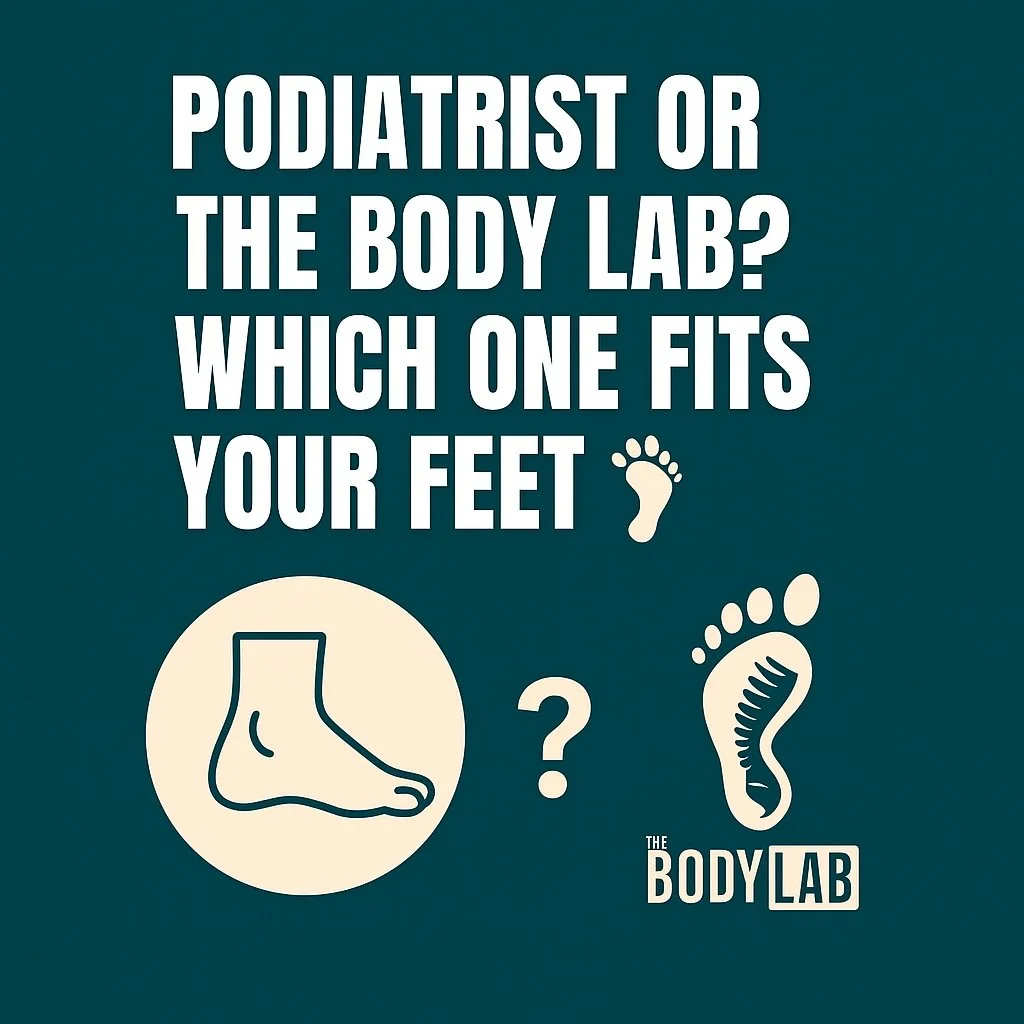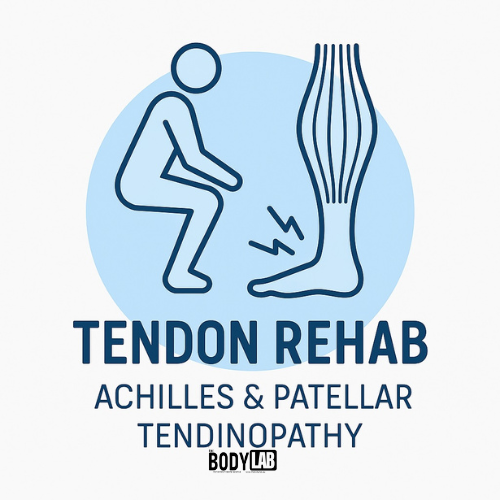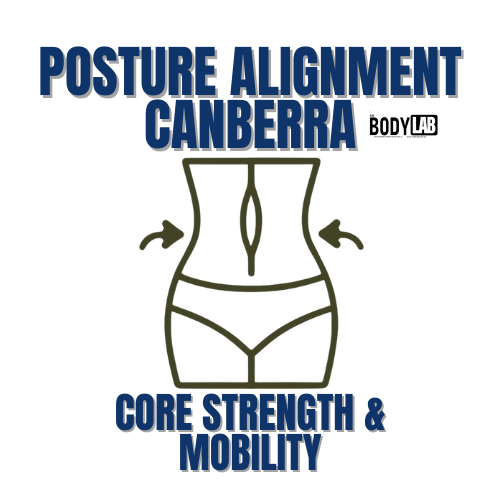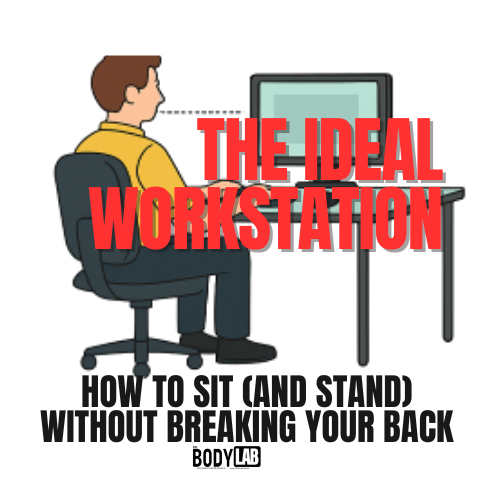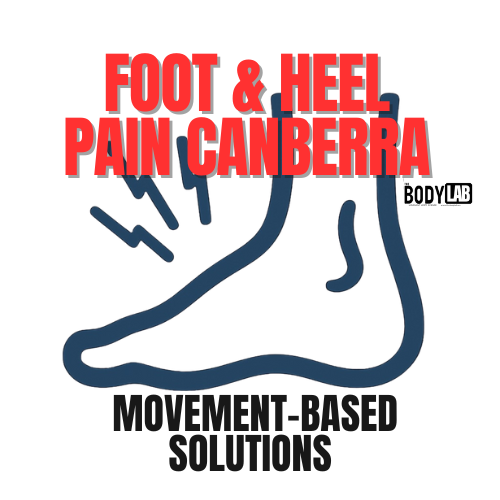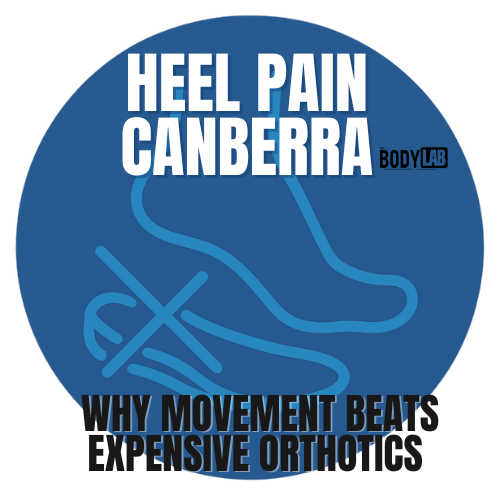Time for a Rebrand – Plantar Fasciitis or Heel Pain?
Plantar Fasciitis or Heel Pain @ The Body Lab Canberra
Plantar Fasciitis or Heel Pain?
The Body Lab
Plantar Heel Pain (PHP) has been on quite a journey over the centuries. Back in the 1600s, it was charmingly called “Gonorrhoeal Heel.” Yeah, they really went there. Fast forward to today, and the term “Plantar Fasciitis” has stuck around, but it might be time for an upgrade. After all, not all cases involve the dreaded fascia inflammation that the name suggests.
What Exactly is Plantar Heel Pain?
Plantar Heel Pain is the umbrella term for that annoying, sharp heel pain that shows up when you first get out of bed or stand up after a Netflix binge. We used to think it was all about inflammation, but newer studies suggest it’s more like a tendon injury. Think of your fascia like a tired rubber band—constantly getting stretched without a break.
The Problem with “Plantar Fasciitis”
The term “fasciitis” implies inflammation, but most cases of PHP aren’t inflammatory. In fact, it’s more about degeneration than inflammation. So, why not call it what it is? “Plantar Heel Pain” keeps it simple and to the point. Plus, who needs a scary-sounding medical term when your foot is already making you feel old?
The Clues to Look For – Is It PHP?
PHP isn’t just about foot pain; it’s about a pattern of symptoms. Classic signs include:
Sharp heel pain with the first steps in the morning
Pain after sitting for a long time
Better as you warm up and keep walking
Tenderness when you poke the bottom of your heel (diagnosis 101!)
Plantar Fasciitis or Heel Pain?
According to Buchanan PHP effects 10% of the population at some stage in their lives and accounts for 11% to 15% of all foot symptoms in general practice
What Can You Do About It? – Treatment Options That Don’t Seem to work?
When it comes to Plantar Heel Pain (PHP), not all treatments are created equal. Here’s the lowdown on what might actually help:
1. Stretching and Strengthening:
Don’t just sit there—get those muscles moving! Stretching your Achilles tendon and strengthening your calf muscles and foot arches are key to relieving strain on the plantar fascia. Your fascia won’t strengthen itself, so it’s time to get proactive with targeted exercises that can help improve flexibility and support.
2. Orthoses:
Think of orthotics as a temporary friend, not a lifelong commitment. They can provide immediate relief by supporting the arch and redistributing weight away from the heel, but they don’t address the underlying causes of foot pain. Once your symptoms improve, it’s crucial to focus on retraining your foot to function properly without relying on support.
3. Taping:
The duct tape of foot care—it’s a quick and simple way to provide temporary support to the arch and reduce pain during activities. While taping can help you get through the day, it’s not a long-term solution. Use it to get over the hump, but don’t expect it to solve the problem on its own.
4. Resistance Training:
Get those heels to the gym! Incorporating resistance exercises such as heel raises can be more effective than passive stretching alone. Strengthening your foot and calf muscles helps to improve the stability and function of the plantar fascia. It’s like sending your heels to boot camp so they can handle life’s daily stresses with ease.
What I Do Differently at The Body Lab
At The Body Lab, I go beyond standard treatments with a unique, integrative approach to resolve Plantar Heel Pain for good:
• Movement Therapy:
We won’t just focus on your foot—I’ll help retrain the movement patterns of your entire body, including your hips, spine, and core. By targeting how your body functions as a whole, we can make sure your feet aren’t just coping with pain but actually learning to move in a way that promotes long-term healing.
• Acupuncture:
Using Classical Chinese Acupuncture, I work to alleviate pain and improve blood flow, not just at the site of the discomfort but throughout related areas in the body. Acupuncture helps release tension and supports the body’s natural healing process, speeding up recovery from chronic heel pain.
• Biomechanical Analysis:
I’ll assess how your foot moves during walking, looking for compensations or misalignments that could be putting stress on your plantar fascia. This allows for a customised treatment plan that addresses the root cause of the problem and improves your overall movement patterns.
By combining these approaches, I offer a comprehensive solution designed not just to manage symptoms but to fix the underlying issue, helping you move better and feel stronger. Whether you’ve tried orthotics, physiotherapy, or other treatments without success, my goal is to provide sustainable results that get you back on your feet—literally.
Should You Consider Injections or Surgery?
If you’ve tried everything else and still can’t walk without wincing, it might be time for a chat about more invasive options. Corticosteroid injections can provide temporary relief, but they’re not a long-term fix. And surgery? Let’s keep that as a last resort. Think of it as the foot version of calling in the SWAT team—only when absolutely necessary.
Why PHP Isn’t Just About Foot Pain – The Psychological Impact
Living with chronic heel pain isn’t just tough on your feet; it can mess with your head too. Anxiety, stress, and even depression are common side effects. And for some, it’s even led to “kinesiophobia”—that’s the fancy term for being afraid to move because it hurts. The moral of the story? Your feet are the unsung heroes of your mental health.
Ready to Ditch the Pain?
Stop stressing over “Plantar Fasciitis”; focus on solutions for “Plantar Heel Pain.” At The Body Lab, we use movement therapy and acupuncture to target root causes of pain, helping you regain mobility and confidence. Why settle for temporary fixes? Our comprehensive approach addresses underlying issues for long-term relief.
Most clients come to The Body Lab after conventional treatments like orthotics or physio haven’t delivered the results they hoped for. My approach ensures you’re not just managing symptoms but addressing the root of the issue to walk away stronger and pain-free.
Here’s what makes us different:
1. Movement Therapy
Rather than relying solely on orthotics or prescribing rest, I retrain your foot’s movement patterns to integrate the entire body—hips, spine, and core included. This whole-body approach ensures that your feet don’t just cope with the pain; they learn to move in ways that reduce stress and promote natural healing. By enhancing how your body moves as a unit, we target the true source of the pain for lasting relief.
2. Acupuncture
Using Classical Chinese Acupuncture techniques, I go beyond treating the site of pain. By improving blood flow and releasing tension throughout the body, acupuncture helps alleviate chronic discomfort and speeds up recovery from stubborn heel pain. It’s not just about pain relief; it’s about restoring balance and encouraging the body to heal from within.
3. Biomechanical Analysis
I perform a detailed gait and foot movement analysis to identify any misalignments or compensations that may be causing stress on your plantar fascia. This thorough assessment allows me to create a customised treatment plan tailored specifically to your needs, focusing on functional improvements rather than standard, one-size-fits-all advice.
My goal is not only to get you back on your feet but to make sure you walk away with healthier, more resilient feet. Instead of offering temporary quick fixes, I prioritise long-term solutions to ensure sustainable relief and improved overall movement.
Ready to Ditch the Pain?
Is it time to stop stressing about “Plantar Fasciitis” and start focusing on real solutions for “Plantar Heel Pain”? Absolutely. It’s not just about changing the name—it’s about changing the approach. At The Body Lab, we go beyond the standard treatments with movement therapy and acupuncture that target the root causes of your pain, helping you regain mobility and confidence. Why settle for temporary fixes when you can find long-term relief?










